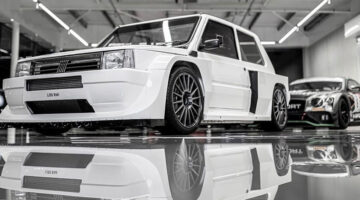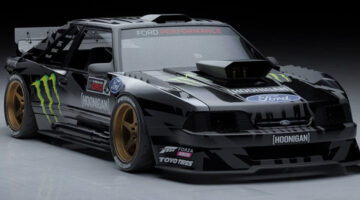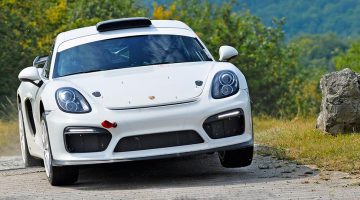Guest contributor Matt White – from Blogspot Itchy Trigger Finger – takes on the 2014 Tour Auto on the roads and race circuits in France.
[Not a valid template]In its 23rd year, the Tour Auto Rally is one of the highlights of the motorsport calendar. Rekindling the flame of the traditional Tour De France Automobile, a sports car race held on roads around France on an annual basis between 1899 and 1986. The event was reinvented a mere six years later, and renamed as Tour Auto. Closely following the format of its predecessor, the event allows drivers the chance to re-enact the great event by competing in sports cars built before 1974, in a race around France on country roads, race circuits and closed road time trials. With an extensive entry list, ranging from prototype race cars from manufacturers such as Porsche, Aston Martin and Ferrari through to rare classics in concours condition. The 2000km race through France also attracts World Class drivers, keen to sample the atmosphere of the event, Ex F1 Driver Olivier Panis, Le Mans Winners Jurgen Barth and Emanuele Pirro, and World Rally winner Armin Schwarz amongst others.

The Grand Palais in Paris is the traditional start of the event, where the drivers embark on the 2000km route through France, sampling a unique drive through many picturesque country roads which span the sublime French landscape. Each year, the planned tour through France includes circuit races in addition to a number of closed road stages, akin to rallies or hill climbs. This allows for the drivers to fully explore the limits of the cars, free from the constraints of speed limits, other traffic, and the watchful glare of the local Gendarme.

The first stop, en route after leaving Paris, was a break for an early lunch at Chateau Bussy-Rabutin. This immaculately manicured chateau was developed from a 12th-century castle in the Cote D’Or region of Bourgogne. This was the first real opportunity to become familiar with the two hundred cars enrolled in the event. One of the great aspects of Tour Auto is the opportunity to get up close with both the cars and drivers competing in the event. To witness such a spectacular array of machinery in the grounds of an opulent French Chateau is certainly an opportunity to relish.

Following the lavish lunch break, the cars arrived at the Dijon-Prenois circuit, on the western side of the city of Dijon. The circuit, formerly used as a host for the French Grand Prix until 1984, is renowned for its challenging undulations and sweeping curves, making it a true test for any driver. The continental sun was making an appearance, following the overcast conditions of the previous couple of days, warming the track nicely which produced great, grippy racing conditions.
At this stage, the cars are separated into groups, where cars of similar potential are pooled together in order to provide the best conditions for close, competitive racing. There are three ‘Racing’ groups, and two groups comprised of sports cars which compete on a Regularity basis.

Despite qualifying starting at around 1.30pm, the racing continued until the sun went down, and into the blue hour and onset of darkness. It is quite a spectacular sight to see a Porsche 906 tearing down the pit straight, lights ablaze, while standing mere metres away behind the Perspex protection of the pit wall.

The second day saw the first two closed road trials, which are a particular attraction of the event. Not only are the spectators treated to such delights as De Tomaso Panteras and Ford GT40s let loose in the hands of world class drivers but, also, the closed road stages are often the most exciting to watch, as the spectacular scenery, and unpredictable road conditions, twinned with the proximity to the cars make it a truly exhilarating experience. Between the villages of Remiront and Val D’Ajol in the Vosges mountains in Eastern France, the reverberation of engines straining at maximum revs echo through the valleys with an ominous presence. Spectators line the hillside and the unmistakeable smell of barbecues, combined with the exuberant enthusiasm fuelled by numerous bottles of Rose, all help to make the atmosphere akin to a festival. As the cars scream past, at 60 second intervals, darting through patches of light, where the forest has allowed the sun to break through, the smell of hot rubber and high octane fuel penetrate the air to enhance the already remarkable atmosphere.

Released from the challenges of the forests, the drivers headed further east toward the German border, and the vineyard laden foothills of Alsace. The second day was concluded by a visit to L’Anneau Du Rhin circuit, north of Mulhouse, yet only a stones’ throw from Freiburg. A much more open circuit than the previous day, L’Anneau Du Rhin excels in facilitating the opening up of some of the monsterous v12 engines, loud enough to pierce an eardrum at 100 paces. Primarily used as a drift and test track, the circuit almost appeared shocked at the wealth of classic cars that arrived that day. Again, a tremendous turn out of fans, supporters and enthusiasts lined the spectator areas, with keen anticipation for the cacophony of sound from the volley of engine noise to punctuate the afternoon. Despite the long straights of the track providing an obvious advantage to some of the competitors, the racing was closer than expected and, once more, ran right through into the glorious dusk of deepest Alsace. Olivier Panis again provided the main spectacle on track, manhandling his Saba sponsored Ferrari 308 GTB Michelotto to record the fastest time in qualifying, and subsequently the category win. As the day gave way to night, the last of the dying sun provided some fantastic photographic opportunities, the painted blue lines surrounding the circuit reflecting the golden evening tones, the cars side lit by the most fantastic amber tones.



